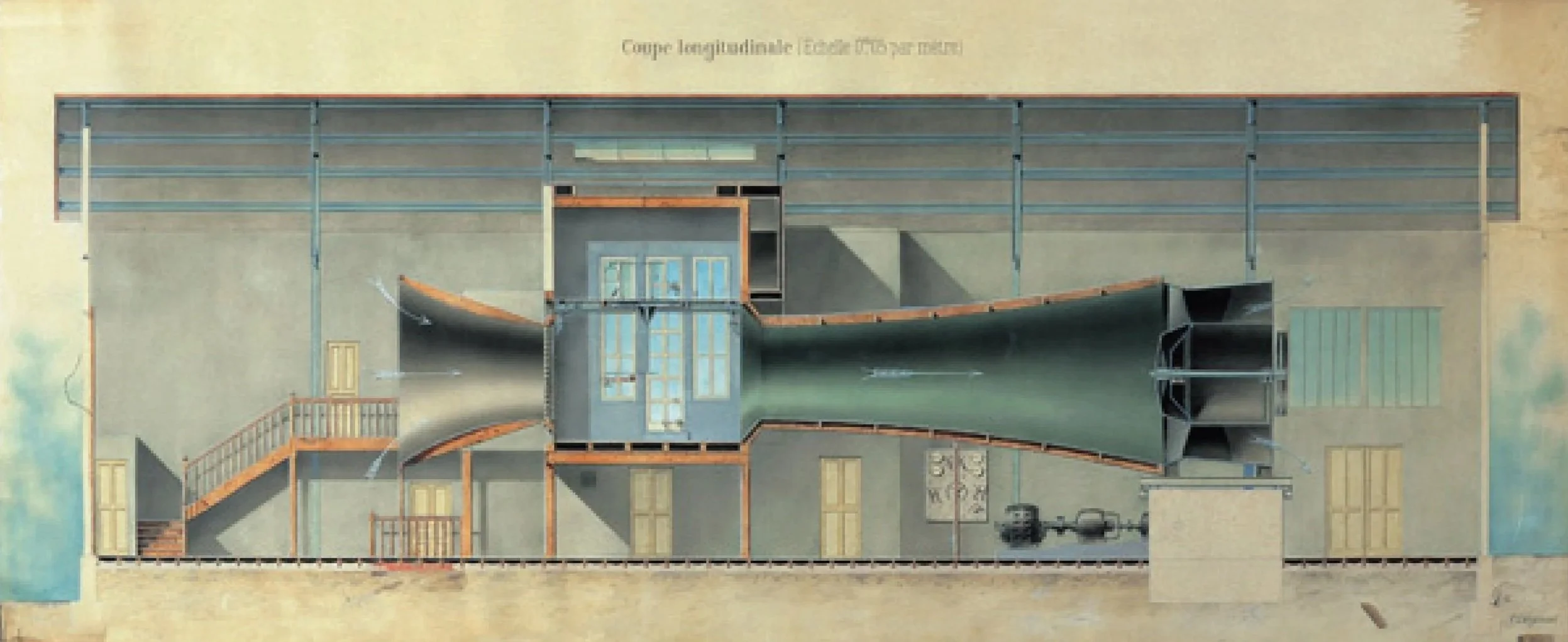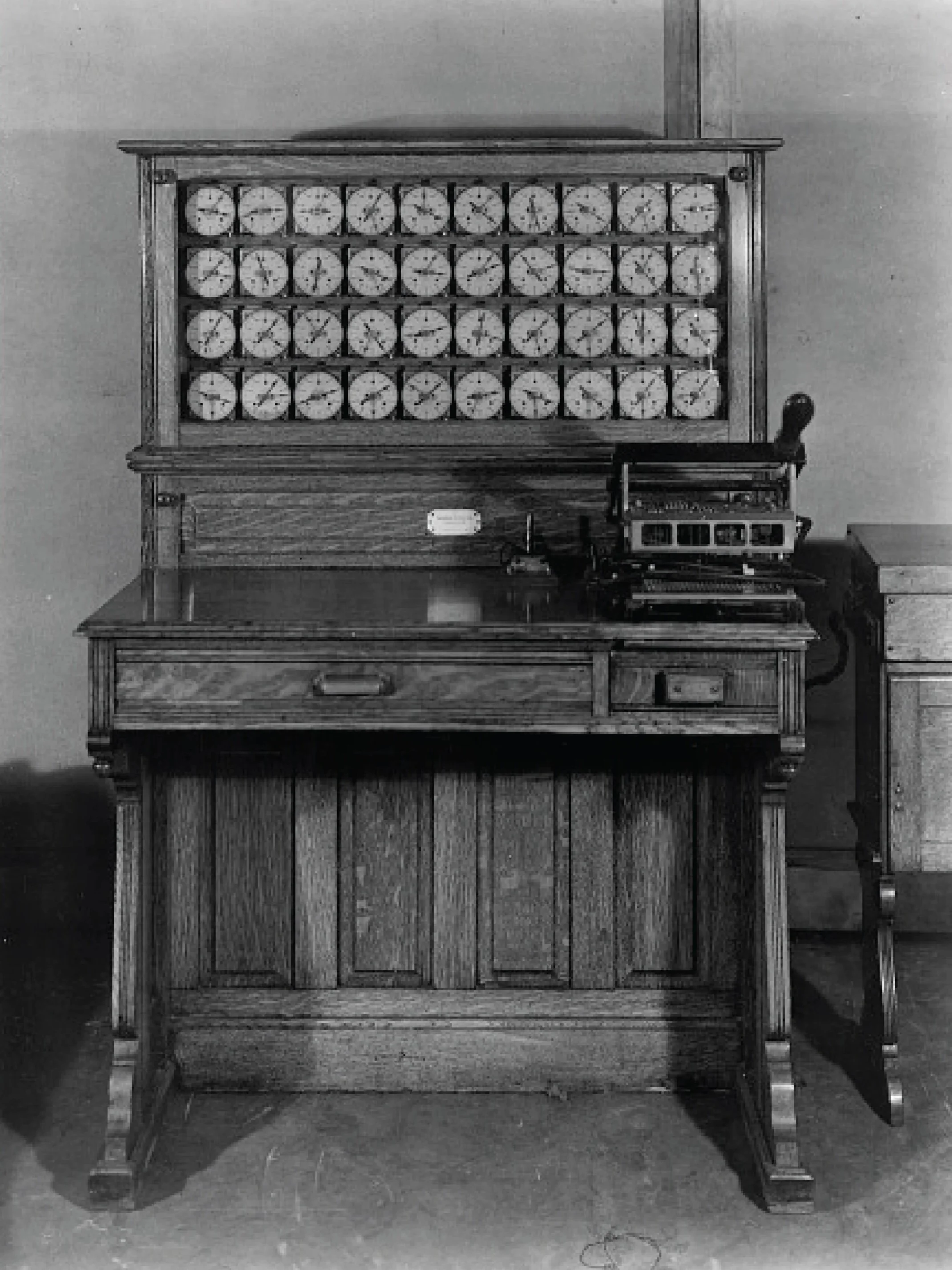From world treasure to flaming meme
CDG
48˚ 51’ 32” N | 2˚ 17’ 40” E
CDGE07015*
In the final scenes of 1968’s dystopian Planet of the Apes, viewers learn the ‘planet’ is Earth after human civilization has disappeared. The proof? The Statue of Liberty’s raised torch above a fragment of the monument lapped by coastal surf. It remains a seminal moment in science fiction cinema. © Vast Compass, 2025.
Outstanding universal value
Like the remaining Art Nouveau entrances to the Paris Métro, the Eiffel Tower is protected by fiat. In 1991 UNESCO inscribed the historic center of Paris on its listing of World Heritage Sites. The Paris, Banks of the Seine designation protects many of the City of Light’s landmarks on both sides of its iconic river in recognition of their unique cultural heritage.
From the UNESCO World Heritage Convention Brief Synthesis, “Criterion (i) : The banks of the Seine are studded with a succession of architectural and urban masterpieces built from the Middle Ages to the 20th century, including the Cathedral of Notre-Dame and the Sainte Chapelle, the Louvre, the Palais de l’Institut, the Hôtel des Invalides, Place de la Concorde, Ecole Militaire, the Monnaie (the Mint), the Grand Palais of the Champs Elysées, the Eiffel Tower and the Palais de Chaillot.”
The UNESCO World Heritage Site map showing the Paris, Banks of the Seine area designated for protection in orange. A brass pin marks the location of the Eiffel Tower (l.).
Proud papa?
In 1884 Gustave Eiffel likely wasn’t thinking of his creation in terms of posterity for all time, but he did live long enough to see the Tower accepted and revered. Perhaps there was even a little touch of jealousy in her eclipsing his own fame.
I ought to be jealous of the tower.
She is more famous than I am.
—Gustave Eiffel
From engineering to aerodynamics
Alas, fame can be a double-edged sword. Eiffel’s firm was contracted to build 10 locks in the Panama Canal, but financial troubles made the whole project a political nightmare. Swept up in accusations of fraud and mismanagement, Eiffel was convicted, fined, and sentenced to prison. While he was found not guilty and acquitted on appeal, the damage to his reputation was considerable. He resigned from his own firm and largely walked away from engineering for the remainder of his life. Turning his energies fully to the study of aerodynamics Eiffel codified a fundamental part of the inverse-square law in physics. By dropping various objects from atop the Eiffel Tower he established that air resistance is proportional to the square of the airspeed—meaning that if the wind speed doubles, resistance quadruples.
The Wright Brothers flew their heavier-than-air aircraft at Kitty Hawk in 1903, launching the Aerial Age. Always au courant, Gustave Eiffel built several wind tunnels, including in the shadow of the Eiffel Tower on the Champ-de-Mars in 1909 to investigate airfoil shapes and the ways in which lift is primarily caused by a reduction in air pressure above the wing of an aircraft, rather than an increase in pressure below. His findings were substantive use to inventors increasingly looking to the skies.
Gustave Eiffel’s publications include Experimental Research on Air Resistance Carried Out at the Eiffel Tower (1907), The Resistance of Air and Aviation, Experiments Conducted at the Champ-de-Mars Laboratory (1910), and New Research in Air Resistance and Aviation Conducted at the Auteuil Laboratory (1914).
Laboratoire Aerodynamique Eiffel
The wind tunnel Eiffel built on the Champ-de-Mars featured a 70-horsepower motor powered by the Tower’s electric station. Image credit: Association des Descendants de Gustave Eiffel (ADGE).
“M. Eiffel in his latest aerodynamical laboratory.” Aviation and Aeronautical Engineering, August 1916. Photo credit: Wikipedia Commons.
It was used to study the wing designs of aircraft flown by the Wright Brothers and other early aviators. Image credit: Association des Descendants de Gustave Eiffel (ADGE).
The birth of supercomputing
What began as a 1,000-foot-high gateway for a temporary event is now enshrined in our collective consciousness and is likely to stay there. Because while the Eiffel Tower marked the end of Gustave Eiffel’s work as an entrepreneur, his Tower was just getting started. It was one among 1,000s of innovations on display during the Exposition Universelle in 1889 that would collectively usher in a new era of technologies re-shaping the world in profound ways.
Along with the moving sidewalk and electric streetcar, an improved incandescent bulb and roll film and Kodak camera, a device that looked like a small upright piano fitted with 40 clock dials made its debut. The Hollerith tabulating machine was the first instance of a physical device validating Charle’s Babbage’s concept of mathematical calculation posited in 1837. (To give France its full due, Babbage, in turn, had been inspired by the punch card system invented by the Jacquard loom company in 1804. Jacquard, meanwhile, built upon French inventions dating back to 1740, 1728, and 1725.)
La Galerie des Machines, built for the Exposition Universelle in 1889, was the largest interior open space to that time. Shown here on a carte postale in 1899, the building was demolished 11 years later.
Interior of the Galerie des machines (1889). The expo showcased many thousands of innovations, including Herman Hollerith’s tabulating machine, the first built computing device. Photo credit: U.S. Library of Congress.
Herman Hollerith's tabulating machine included a sorter, Pantographic card punch, and reading station. Metal pins passed through holes in the paper cards and made contact with wells of mercury which completed an electrical circuit for tabulation. The first use of the device’s automation at scale was during the 1890 U.S. Census. Its adoption was urgent, given that the 1880 Census had taken eight years to process. Photo credit: U.S. Library of Congress.
From IBM to I can has cheezburger?
The upshot is that the Hollerith tabulating machine became the foundation of IBM and supercomputing. And the logical outcome of that development was...cat videos and viral memes.
<sigh>
In that same vein, among the memes of 2024 were AI-generated images showing the Eiffel Tower engulfed in flames even as Paris hosted the Olympic Summer Games. Which isn’t a surprise. The Tower is so prevalent in culture that Hollywood regularly destroys it through CGI effects as aliens invade, meteors rain down, and nuclear Armageddon unfolds. The Iron Lady stands in as a global symbol of what we lose when human ingenuity is destroyed by forces of uncontrolled entropy. And now, with Generative AI at the fingertips of anyone having a screen, the Tower can be destroyed in just a few well-written prompts.
Memeworthy?
Multiple fake images of the Eiffel Tower being consumed by a raging inferno were posted as breaking news in the summer of 2024. Originating from Armenia a year earlier, they were seen and shared by millions during the global sports competition hosted by Paris.
Not all AI-related images are as sensational as the Tower in flames. Cleverly written prompts to re-imagine the Tower in the style of modern starchitects is another thought-provoking use case from the Summer of 2025. Image credits: Fello AI.
Unexpected connections
The most treasured part of travel for me is discovering unexpected connections between what we see and what makes up the ‘rest of the story’. If you’ve scanned a few of these posts featuring the Eiffel Tower you know that there are surprises galore. From King Louis XIV, Bridget Bardot, and Meryl Streep, to the first skyscraper (in St. Louis, Missouri), the Suez Canal (in Egypt), and the first postcard (in Austria). And we haven’t even taken the time or made the space to include other personalities and attractions at the world’s fair in 1889—Buffalo Bill and his Wild West show with sharpshooter Annie Oakley; belly dancers plying their exotic talents on a Cairo-themed street; letters sent by ballon; and ‘ethnological exhibitions’ (that is, human zoos) displaying residents and their customs from numerous French colonies (I know, appalling).
Share a thousand worlds
All of which is to say, we each have a thousand worlds to share, and travel makes it all possible. For that I’m grateful. I’m also thankful for this digital campfire where we can collapse time and space and connect to hear and learn from one another. Please share some of your favorite travel stories in the comments below, related to the Eiffel Tower or otherwise!
Recommended
We have several paintings of Paris’ slate and zinc roofs from Carré d’artistes. The artists listed below have works featuring the Eiffel Tower. There are five galleries in Paris (our usual haunt is at 66 rue Saint André des Arts on the Left Bank), with another four in the Île-de-France.
Carré d’artistes
Artists with works including the Eiffel Tower
Emma Fischer
Brooksby
Faveau Adrien
Romanelli Karine
Dandapat Swarup
Degabriel Véronique
Eugène Romain
Pigni Diana
Fran Sosa




















